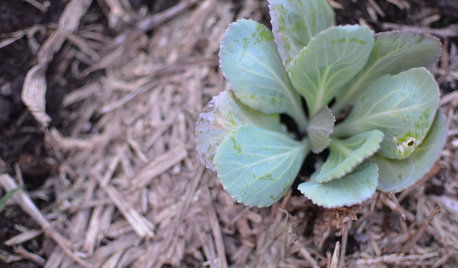2012 Squash and Squash Bugs
Tractorlady63
12 years ago
Related Stories

EDIBLE GARDENSSummer Crops: How to Grow Squash
Almost foolproof and with cheerful flowers, squash comes in a wide range of varieties to plant in spring
Full Story
FARM YOUR YARDHouzz Call: Home Farmers, Show Us Your Edible Gardens
We want to see where your tomatoes, summer squashes and beautiful berries are growing this summer
Full Story
REGIONAL GARDEN GUIDESMid-Atlantic Gardener's September Checklist
Squash, anyone? Cool-season veggies are suiting up for the garden, while summer's last blooms are winding down
Full Story
LIGHTINGOn Trend: Globe Lights Give Rooms a Well-Rounded Look
Updated and transformed for fall 2012, globe light fixtures have a ball in rooms of any style
Full Story
EDIBLE GARDENSGarden BFFs? Why Your Vegetables Are Begging for Companion Plants
Foster friendships among plants for protection from pests, pollination support and color camaraderie
Full Story
EDIBLE GARDENSSummer Crops: How to Grow Pumpkins
Start in spring to grow your own fall decorations and have plenty left for pies
Full Story
HOLIDAYSPumpkin Themes to Haunt Your Halloween
What current events and decorating styles will inspire your pumpkins this year?
Full Story
BENEFICIAL INSECTSAttract Pollinators for a Productive Edible Garden
You can lure bees, butterflies and birds into your yard with the right flowers and nesting spots
Full Story
DESIGNER SHOWCASES20 Fantasyland Dining Room Designs That Delight
A wonder to behold, these incredible professionally designed rooms take everyday dining over the top
Full Story
GARDENING GUIDESOrganic Matters: Thwart Insect Pests With Trap Crops
Add a few sacrificial plants to your garden to lure insects away from the harvest
Full StorySponsored
More Discussions






Okiedawn OK Zone 7
Macmex
Related Professionals
Maple Valley Landscape Architects & Landscape Designers · Citrus Heights Landscape Architects & Landscape Designers · Elgin Landscape Contractors · Damascus Landscape Contractors · Davidson Landscape Contractors · Lehigh Acres Landscape Contractors · Metairie Landscape Contractors · Northport Landscape Contractors · Ronkonkoma Landscape Contractors · Aventura Decks, Patios & Outdoor Enclosures · Columbia Decks, Patios & Outdoor Enclosures · Fort Collins Decks, Patios & Outdoor Enclosures · Fort Lee Decks, Patios & Outdoor Enclosures · Norman Decks, Patios & Outdoor Enclosures · Orange County Decks, Patios & Outdoor EnclosuresOkiedawn OK Zone 7
Macmex
miraje
seeker1122
soonergrandmom
p_mac
soonergrandmom
slowpoke_gardener
soonergrandmom
slowpoke_gardener
slowpoke_gardener
Tractorlady63Original Author
elkwc
soonergrandmom
Okiedawn OK Zone 7
elkwc
biradarcm
Sid23
shallot
Macmex
shallot
pattyokie
ejm135
shallot
Annabananna22
Macmex